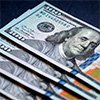 EUR/USD: Dovish Fed Reversal
EUR/USD: Dovish Fed Reversal
The fate of EUR/USD was determined by two events last week: the FOMC (Federal Open Market Committee) meeting of the US Federal Reserve and the meeting of the Governing Council of the European Central Bank (ECB), which took place a day later. As a result, the euro emerged victorious: for the first time since November 29, the pair rose above 1.1000.
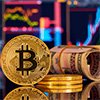 EUR/USD: Continuation of the Rate War
EUR/USD: Continuation of the Rate War
The labour market and inflation: these are the factors that Central Banks closely monitor when making decisions regarding monetary policy and interest rates. It is sufficient to recall the significant shift that occurred after the publication of October's inflation data in the United States. In November, the dollar weakened significantly, and the classical portfolio of stocks and bonds yielded the highest profit in 30 years! EUR/USD, starting at 1.0516, reached a monthly peak on November 29 at 1.1016.
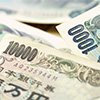 EUR/USD: December – A Formidable Month for the Dollar
EUR/USD: December – A Formidable Month for the Dollar
Who will start loosening the grip on their monetary policies earlier, the Federal Reserve (FRS) or the European Central Bank (ECB)? The discussion on this topic remains active, as clearly seen in the quotes' charts. The statistics from the past week did not allow EUR/USD to solidify above the significant level of 1.1000. It all began on Wednesday, November 29, with the publication of inflation data in Germany. The preliminary Consumer Price Index (CPI) in annual terms amounted to 3.2%, which is lower than both the forecast of 3.5% and the previous value of 3.8%. In monthly terms, the German CPI went even deeper into the negative territory, reaching -0.4% (against a forecast of -0.2% and 0.0% the previous month).
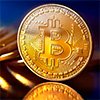 EUR/USD: Day of Thanksgiving and Week of Contradictions
EUR/USD: Day of Thanksgiving and Week of Contradictions
Reminder that the American currency came under significant pressure on November 14 following the release of the Consumer Price Index (CPI) report in the USA. In October, the Consumer Price Index (CPI) decreased from 0.4% to 0% (m/m), and on an annual basis, it dropped from 3.7% to 3.2%. The Core CPI for the same period decreased from 4.1% to 4.0%: reaching the lowest level since September 2021. These figures caused a tumble in the Dollar Index (DXY) from 105.75 to 103.84. According to Bank of America, this marked the most significant dollar sell-off since the beginning of the year. Naturally, this had an impact on the dynamics of the EUR/USD pair, which marked this day with an impressive bullish candle of almost 200 pips, reaching resistance in the 1.0900 zone.
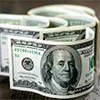 EUR/USD: November 14 - a Dark Day for the Dollar
EUR/USD: November 14 - a Dark Day for the Dollar
In the previous review, the overwhelming majority of experts expressed opinions favouring further weakening of the American currency. This prediction came to fruition. The Consumer Inflation report in the United States, published on Tuesday, November 14, toppled the Dollar Index (DXY) from 105.75 to 103.84. According to Bank of America, this marked the most significant dollar sell-off since the beginning of the year. Naturally, this had an impact, including on the dynamics of EUR/USD, which marked this day with an impressive bullish candle, rising nearly 200 points.
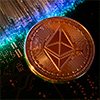 EUR/USD: How Mr. Powell Aided the Dollar
EUR/USD: How Mr. Powell Aided the Dollar
The past week witnessed few significant events, which reflected in EUR/USD pair's fluctuations around 1.0700. Notably, there was a slight increase in the Dollar Index (DXY), starting at 105.05 and reaching a peak of 105.97 by Friday, November 10. This growth was primarily attributed to the "hawkish" comments made by the Chair of the Federal Reserve.
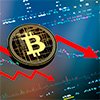 EUR/USD: A Bad Week for the Dollar
EUR/USD: A Bad Week for the Dollar
Throughout the week, the Dollar Index DXY, along with EUR/USD, appeared to be riding the waves, moving up and down. At the beginning of the week, preliminary data for Europe was released. In terms of annual growth, the GDP of the Eurozone in the third quarter was only 0.1%, which fell short of both the forecast of 0.2% and the previous figure of 0.5%. In addition, inflation took a downward turn – in October, the Consumer Price Index (CPI) stood at 2.9% (year-on-year), missing the forecast of 3.1% and the previous month's 4.3%.
 EUR/USD: Awaiting the Pair at 1.0200?
EUR/USD: Awaiting the Pair at 1.0200?
Having started the past week on a positive note, EUR/USD approached a significant support/resistance level at the 1.0700 zone on Tuesday, October 24, before reversing and sharply declining. According to several analysts, the correction of the DXY Dollar Index that began on October 3rd, which correspondingly drove EUR/USD northward, has come to an end.
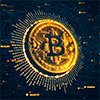 EUR/USD: No Interest Rate Hikes from the Fed and ECB in the Near Future?
EUR/USD: No Interest Rate Hikes from the Fed and ECB in the Near Future?
Starting from the last days of September, the U.S. Dollar Index (DXY) has been trading within a sideways channel. Macroeconomic data released last week did not provide a clear advantage to either the U.S. or the European currency. On Tuesday, October 17, U.S. retail sales data was published, showing a monthly increase of 0.7%. Although this figure was lower than the previous 0.8%, it substantially exceeded the market's average forecast of 0.3%. On the same day, the ZEW Economic Sentiment Index for the Eurozone was also released, outperforming expectations with a reading of 2.3, considerably better than the forecast of -8, and marking a full rebound from the previous negative figure of -8.9.
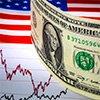 EUR/USD: Inflation Drives Trends
EUR/USD: Inflation Drives Trends
At the beginning of last week, the Dollar Index (DXY) continued its decline that began on October 3, while global equity markets experienced growth. The dovish stance of Federal Reserve officials and the falling yields on U.S. Treasury bonds were driving factors. In recent days, the regulators have been actively persuading the market of the likelihood of a "soft landing" for the U.S. economy, suggesting a potentially prolonged pause in the cycle of monetary tightening. For instance, on Wednesday, October 11, Christopher Waller, a member of the Federal Reserve Board of Governors, stated that "tightening in financial markets is doing some of our work for us," allowing the central bank to maintain a wait-and-see approach.
 EUR/USD: Will the Pair Reach 1:1 Parity?
EUR/USD: Will the Pair Reach 1:1 Parity?
Throughout 2023, the U.S. economy has effectively withstood aggressive interest rate hikes. The market-anticipated recession has yet to materialize, allowing the Federal Reserve to maintain its hawkish monetary stance. This has led to a sharp increase in Treasury yields and significant strengthening of the U.S. dollar. The yield on 10-year Treasuries plummeted 46% since March 2020, doubling the previous decline witnessed in 1981 amid aggressive monetary tightening by the U.S. central bank. As for the Dollar Index (DXY), it has remained above the critical level of 100.00 throughout the year, while EUR/USD has dropped 6.5% from its July highs.
 EUR/USD: Correction is Not a Trend Reversal Yet
EUR/USD: Correction is Not a Trend Reversal Yet
The dynamics of the EUR/USD pair in the past week were atypical. In a standard scenario, combating inflation against the backdrop of a strong economy and a healthy labour market leads to an increase in the central bank's interest rate. This, in turn, attracts investors and strengthens the national currency. However, this time the situation unfolded quite differently.
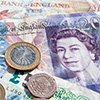 EUR/USD: Verbal Interventions by the Federal Reserve Support the Dollar
EUR/USD: Verbal Interventions by the Federal Reserve Support the Dollar
In previous reviews, we extensively discussed the verbal interventions made by Japanese officials who aim to bolster the yen through their public statements. This time, similar actions have been taken by FOMC (Federal Open Market Committee) officials, led by the Chairman of the Federal Reserve, Jerome Powell. At their meeting on September 20th, the FOMC decided to maintain the interest rate at 5.50%. This was largely expected, as futures markets had indicated a 99% probability of such an outcome. However, in the subsequent press conference, Mr. Powell indicated that the battle against inflation is far from over, and that the 2.0% target may not be achieved until 2026. Therefore, another rate hike of 25 basis points is very much in the cards. According to the Fed Chairman, there is no recession on the horizon, and the U.S. economy is sufficiently robust to sustain such high borrowing costs for an extended period. Furthermore, it was revealed that 12 out of 19 FOMC members anticipate a rate hike to 5.75% within this year. According to the Committee's economic forecast, this rate level is expected to persist for quite some time. Specifically, the updated forecast suggests that the rate could only be lowered to 5.1% a year from now (as opposed to the previously stated 4.6%), and a decrease to 3.9% is expected in a two-year outlook (revised from 3.4%).
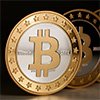 EUR/USD: ECB Triggers Euro Collapse
EUR/USD: ECB Triggers Euro Collapse
The past week was marked by two significant events. The first was the release of Consumer Price Index (CPI) data in the United States on September 13. The second was the meeting of the European Central Bank's (ECB) Governing Council on September 14.
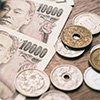 EUR/USD: September 13 and 14 - Key Days of the Week
EUR/USD: September 13 and 14 - Key Days of the Week
For the eighth consecutive week, the U.S. Dollar Index (DXY) is rising, while EUR/USD is declining. The currency pair has retreated to levels last seen three months ago, settling in the 1.0700 zone. It was only the dollar bulls starting to lock in accumulated gains on Friday, September 8, that prevented further declines.
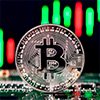 EUR/USD: No to Rate Hike, Yes to Dollar Appreciation!
EUR/USD: No to Rate Hike, Yes to Dollar Appreciation!
Market participants continue to scrutinize the macroeconomic backdrop in the United States, attempting to discern (or speculate) whether the Federal Reserve will proceed with further increases to the federal funds rate. Following disappointing consumer confidence reports, weak ADP labour market data, and a slowdown in economic growth in Q2, market chatter has shifted towards the spectre of recession and the potential for a dovish pivot by the American regulator. U.S. economic growth currently remains above expectations. However, the revised GDP assessment still disappointed markets, as it fell short of initial projections.
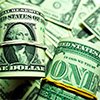 EUR/USD: Mr. Powell and Mrs. Lagarde - Much Talk, Little Substance
EUR/USD: Mr. Powell and Mrs. Lagarde - Much Talk, Little Substance
Last week's business activity data from both sides of the Atlantic proved to be exceptionally weak. The euro came under selling pressure due to a decline in Germany's Services PMI from 52.3 to 47.3, which in turn pulled down the Composite Business Activity Indexes not only for Germany but for the entire Eurozone. The former dropped from 48.5 to 44.7, while the latter declined from 48.6 to 47.0. The GDP data for Germany for Q2, released on Friday, August 25, further confirmed that the economy of the united Europe is stagnating. On a quarterly basis, this metric stood at 0%, and on an annual basis, it showed a decline of -0.6%.
 EUR/USD: What Strengthens the Dollar and What Can Weaken It
EUR/USD: What Strengthens the Dollar and What Can Weaken It
The US currency maintained its ascent last week. The minutes from the Federal Open Market Committee (FOMC)'s July meeting of the US Federal Reserve were published on Wednesday, August 16, suggesting the possibility of further monetary policy tightening.
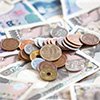 EUR/USD: Inflation, GDP, and Prospects for Monetary Policy
EUR/USD: Inflation, GDP, and Prospects for Monetary Policy
Looking at the two-week flat trend on the EUR/USD chart, one is reminded that it's August, a vacation season. Even the US inflation data released on Thursday, August 10th, couldn't disrupt the relaxed demeanour of traders. And yet, they warrant close attention. The year-on-year Consumer Price Index (CPI) growth of 3.2% and core inflation at 4.7% came in below forecasts (3.3% and 4.8% respectively). The monthly CPI remained unchanged at 0.2%, marking the lowest figure in over two years. As for the GDP, previously released data confirmed a diminished risk of the national economy slipping into a recession. After a 2.0% year-on-year rise in the first quarter of 2023, the second quarter recorded a 2.4% growth, significantly surpassing market expectations of 1.8%.
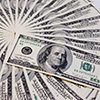 EUR/USD: Dollar Bulls Disappointed by NFP
EUR/USD: Dollar Bulls Disappointed by NFP
Throughout the past week, leading up to Thursday, August 3, the dollar continued to strengthen its position and build on the offensive that began on July 18. It appears that markets, wary of the global economic condition, have once again turned to the American currency as a safe haven.
 EUR/USD: From Hawks to Not-Yet Doves
EUR/USD: From Hawks to Not-Yet Doves
The past week was filled with both events and the release of macroeconomic data. Regarding the Federal Reserve meeting on July 26 and the European Central Bank meeting on July 27, there were no surprises in terms of key interest rate hikes. In both cases, they were predictably increased by 25 basis points (bps): to 5.50% for the dollar and to 4.25% for the euro. Therefore, market participants' attention was drawn to the statements made by the heads of these regulators following the meetings.
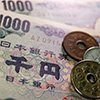 EUR/USD: Awaiting the Federal Reserve and ECB Meetings
EUR/USD: Awaiting the Federal Reserve and ECB Meetings
When the DXY Dollar Index dropped to April 2022 levels (99.65) on July 14, many market participants concluded that the best days for the American currency were over. Inflation is nearing target levels, and in order not to suffocate the economy, the Federal Reserve will soon initiate a campaign to ease its monetary policy. However, things aren't that straightforward. After reaching a peak of 1.1275 on Tuesday, July 18, the EUR/USD pair reversed and started to decline.
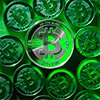 EUR/USD: Falling Inflation Has Crushed the Dollar
EUR/USD: Falling Inflation Has Crushed the Dollar
So, we can either congratulate (or, conversely, upset) everyone with the onset of a global process of dedollarization. As Bloomberg reports, after the inflation rate in the US approached 3.0%, which is not far off the Federal Reserve's target of 2.0%, it seems like a turning point is approaching for the US economy.
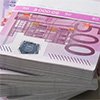 EUR/USD: Much Depends on the CPI
EUR/USD: Much Depends on the CPI
The Dollar Index (DXY) steadily increased during the past week, leading up to Thursday, July 6. As a result, EUR/USD was more inclined towards the American currency, causing the pair to find a local bottom at the 1.0833 level. The dollar's strength was driven by the publication of the minutes from the Federal Open Market Committee's (FOMC) last meeting on June 14. In it, the Committee members highlighted the risks of inflationary pressure and expressed a commitment to swiftly achieve their target inflation levels of 2.0%. They also noted the appropriateness of at least one more interest rate hike, in addition to the one in July, which boosted confidence for DXY bulls. Recall that the head of the regulator, Jerome Powell, also stated at the end of June that the "vast majority of Federal Reserve leaders expect two or more rate hikes by the end of the year".
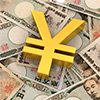 EUR/USD: When Will the Pair Return to 1.1000?
EUR/USD: When Will the Pair Return to 1.1000?
Summarizing the second half of June, the result in the EUR and USD confrontation can be said to be neutral. On Friday, June 30, EUR/USD ended up where it traded on both the 15th and 23rd of June.
 EUR/USD: Officials' Words Drive the Markets
EUR/USD: Officials' Words Drive the Markets
Just a reminder, the Federal Open Market Committee (FOMC) of the US Federal Reserve decided on Wednesday, June 14 to pause the process of monetary tightening and left the interest rate unchanged at 5.25%. The following day, on Thursday, June 15, the European Central Bank (ECB) raised the euro interest rate by 25 basis points from 3.75% to 4.00%. ECB President Christine Lagarde noted that the tightening of credit and monetary policy would continue in July.
 EUR/USD: The Euro's Victory Over the Dollar
EUR/USD: The Euro's Victory Over the Dollar
The key events of the past week were the meetings of the Federal Open Market Committee (FOMC) of the US Federal Reserve on Wednesday, June 14, and the European Central Bank's Monetary Policy Committee on Thursday, June 15. The outcome of these meetings resulted in a decisive victory for the euro over the dollar.
 Gold is one of the favourite trading instruments of the most successful traders at NordFX. This can be easily confirmed by looking at the monthly rankings published by this brokerage company. That is why it is appropriate to provide a special review, focusing solely on the XAU/USD pair.
Gold is one of the favourite trading instruments of the most successful traders at NordFX. This can be easily confirmed by looking at the monthly rankings published by this brokerage company. That is why it is appropriate to provide a special review, focusing solely on the XAU/USD pair.
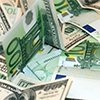 EUR/USD: Will the Dollar Return to Steady Growth?
EUR/USD: Will the Dollar Return to Steady Growth?
The dollar has been rising since May 4. The DXY Index reached the 104.609 mark on the last day of spring, May 31. It hasn't soared this high since January 2023. As we have previously mentioned, two primary factors were propelling the American currency upwards.
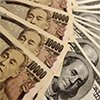 EUR/USD: Dollar Awaits U.S. Bankruptcy
EUR/USD: Dollar Awaits U.S. Bankruptcy
The dollar has been rising since May 4. Last week, on May 26, the DXY Index reached 104.34. It hasn't been this high since mid-March 2023. What is driving the U.S. currency up and, consequently, pushing the EUR/USD pair down? According to analysts at Commerzbank, "the absolute calmness in the options market suggests that the driving force behind the EUR/USD exchange rate is monetary policy considerations rather than ongoing U.S. debt ceiling negotiations." It is worth noting that the probability of a rate hike at the June 14 FOMC (Federal Open Market Committee) meeting increased throughout May. At the beginning of the month, the likelihood of a rate increase was close to 0%, but by the end of the month, it reached 50%. It turns out that the U.S. economy is holding up very well compared to other economies, and the deterioration in lending has not been as severe or rapid as initially feared.